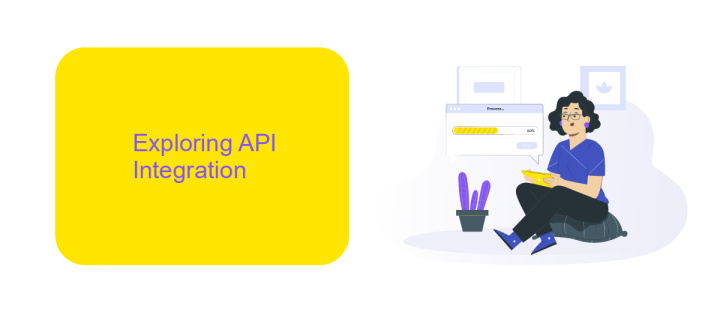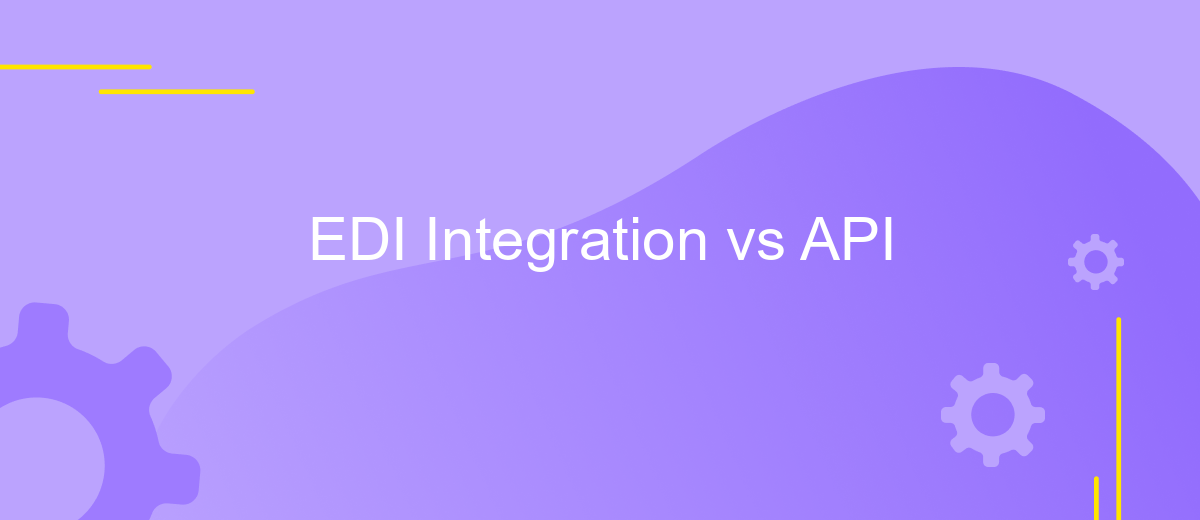EDI Integration vs API
In the rapidly evolving digital landscape, businesses are constantly seeking efficient ways to streamline their operations and enhance data exchange. Two prominent technologies in this realm are Electronic Data Interchange (EDI) and Application Programming Interfaces (API). This article explores the key differences between EDI integration and API, examining their respective advantages and use cases to help organizations make informed decisions for optimizing their communication and data management strategies.
Understanding EDI Integration
Electronic Data Interchange (EDI) Integration is a process that facilitates the electronic exchange of business documents between organizations in a standardized format. This method is crucial for businesses seeking to automate transactions, reduce errors, and improve communication with partners. EDI integration eliminates the need for paper-based communication, streamlining operations and enhancing efficiency. By adopting EDI, companies can ensure that their data is transmitted accurately and securely, fostering better business relationships and optimizing supply chain management.
- Standardization: EDI uses a set of standardized formats, ensuring compatibility across different systems.
- Automation: Streamlines processes by automating the exchange of documents like invoices and purchase orders.
- Security: Provides a secure method of data transmission, reducing the risk of data breaches.
- Cost Efficiency: Reduces operational costs by minimizing manual data entry and paper usage.
Implementing EDI integration requires careful planning and collaboration with trading partners. Businesses must choose the right EDI software and ensure their systems are compatible with those of their partners. Moreover, training staff to manage and troubleshoot EDI systems is essential for maintaining seamless operations. By leveraging EDI integration, companies can achieve significant improvements in their transaction processes and overall operational efficiency.
Exploring API Integration

API integration is a modern approach that enables seamless communication between different software systems by allowing them to exchange data in real time. This method is highly flexible, offering businesses the ability to customize and scale their operations according to specific needs. Unlike traditional methods, APIs provide a more dynamic and efficient way to connect disparate systems, enhancing overall productivity and user experience. Businesses can leverage APIs to automate workflows, streamline processes, and gain actionable insights, ultimately driving growth and innovation.
One of the key advantages of API integration is its ease of implementation, especially with platforms like ApiX-Drive. ApiX-Drive simplifies the process by offering a user-friendly interface that requires no coding skills, making it accessible to a broader range of users. It supports a wide variety of applications and services, allowing businesses to quickly set up integrations and automate tasks with minimal effort. By using ApiX-Drive, companies can ensure their systems are always in sync, reducing the risk of errors and improving operational efficiency.
Key Differences: EDI vs. API

When evaluating EDI and API for integration, it's essential to understand their distinct characteristics. EDI (Electronic Data Interchange) is a standardized method for exchanging business documents between systems, typically used in industries like retail and manufacturing. It relies on established protocols and formats, ensuring consistency and security in data exchange. Conversely, API (Application Programming Interface) facilitates real-time data exchange and integration between applications, offering more flexibility and agility.
- Data Exchange Speed: EDI processes batch data, which might delay transactions, while APIs enable real-time data exchange.
- Complexity: EDI requires specialized knowledge and setup, whereas APIs are often easier to implement with modern tools.
- Cost: EDI can be costly due to proprietary formats and VAN fees, while APIs typically incur lower costs.
- Scalability: APIs offer greater scalability and adaptability to new technologies compared to EDI.
- Security: EDI provides robust security through established protocols, while API security depends on implementation.
Ultimately, the choice between EDI and API depends on the specific needs of a business. EDI is ideal for companies requiring standardized, secure document exchange, while APIs are perfect for those seeking flexibility and real-time integration. Understanding these differences can guide businesses in selecting the right integration method.
Choosing the Right Approach: EDI or API?

When deciding between EDI and API for integration, it's crucial to understand the specific needs of your business. EDI, or Electronic Data Interchange, is a well-established method that is ideal for businesses with high transaction volumes and a need for standardized communication with partners. It offers reliability and is often used in industries like retail and manufacturing.
On the other hand, APIs, or Application Programming Interfaces, provide greater flexibility and real-time data exchange. They are suitable for businesses looking to integrate modern applications and services quickly. APIs are often preferred in industries where agility and rapid deployment are essential, such as technology and e-commerce.
- EDI: Best for large-scale, standardized transactions.
- API: Ideal for real-time, flexible integrations.
- Industry: Choose based on your industry needs and partner requirements.
- Scalability: Consider future growth and integration capabilities.
Ultimately, the choice between EDI and API should be guided by your business's strategic goals, existing infrastructure, and the specific requirements of your trading partners. Carefully evaluate the benefits and limitations of each approach to ensure seamless and efficient integration.
- Automate the work of an online store or landing
- Empower through integration
- Don't spend money on programmers and integrators
- Save time by automating routine tasks
Future Trends in Data Exchange
As technology continues to evolve, the future of data exchange is poised to become more seamless and efficient. Emerging trends suggest a shift towards hybrid models that combine the strengths of both EDI and API. This integration will enable businesses to leverage the reliability and security of EDI while benefiting from the flexibility and real-time capabilities of APIs. Companies are increasingly looking for solutions that can bridge the gap between traditional and modern data exchange methods, ensuring a smooth transition and improved interoperability.
One notable trend is the rise of integration platforms like ApiX-Drive, which facilitate the connection between disparate systems without extensive coding. These platforms empower businesses to automate workflows and synchronize data across various applications effortlessly. As data exchange continues to evolve, the demand for user-friendly integration services will grow, enabling companies to focus on core operations while maintaining robust data connectivity. The future will likely see an increased emphasis on customizable, scalable solutions that can adapt to the ever-changing landscape of digital communication.
FAQ
What is the main difference between EDI and API integration?
Which integration method is more suitable for real-time data exchange?
Can EDI and API be used together in a business environment?
What are the advantages of using API integration over EDI?
How can businesses automate and manage their integrations effectively?
Do you want to achieve your goals in business, career and life faster and better? Do it with ApiX-Drive – a tool that will remove a significant part of the routine from workflows and free up additional time to achieve your goals. Test the capabilities of Apix-Drive for free – see for yourself the effectiveness of the tool.


